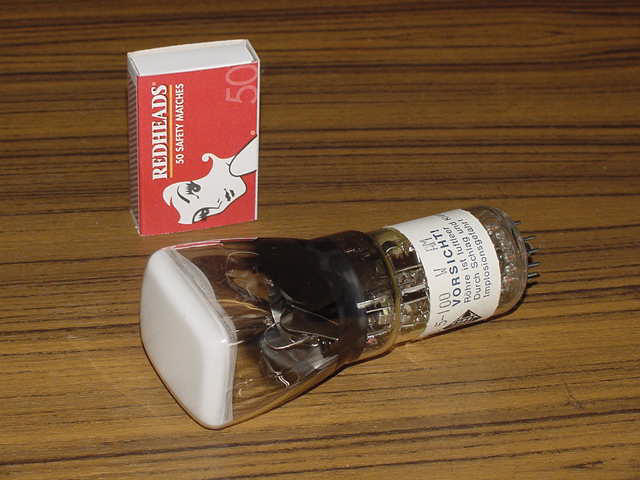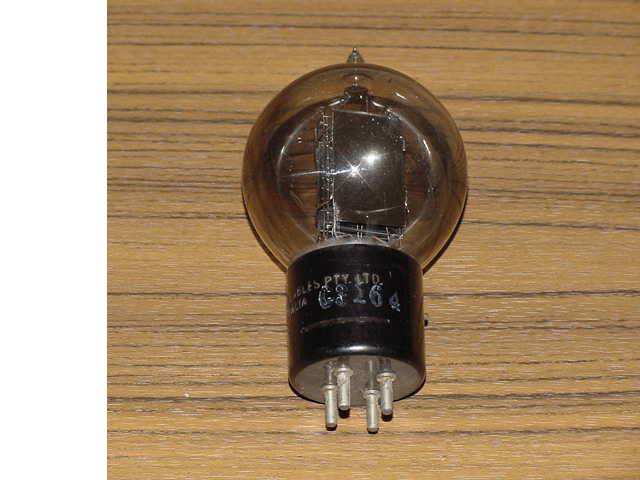| Enter now wireless telegraphy and the need for a detector to make
the wireless signals audible to the operators. For this purpose coherers
and other devices were in use but they were all delicate and erratic in
operation. Marconi overcame this to a certain extent with his magnetic
detector which was reliable and rugged but lacked sensitivity. In 1904
Fleming decided to experiment with one of his "lamps" and found that he
could satisfactorily rectify high frequency currents and from this the
diode detector was born. In the United States Lee de Forrest, after
university graduation, worked for Western Electric Company in Chicago.
His work took him into the area of detection of high frequency signals
and he initially studied the Bunsen burner detector, which proved to be
an unsatisfactory device. In 1905 de Forrest had acquired a Fleming
valve and arranged for copies of it to be made by the McCandless Company
so that he could continue his experiments with detection of high
frequency wireless signals. In an attempt to increase the sensitivity of
his valves, which were now called Audions, he introduced a grid
structure between the filament and the anode to control the flow of
electrons. The device worked successfully and a patent application was
filed in January 1907, and a patent issued in 1908.The patent
application made reference to the possibility of amplification but this
facility was not made use of for another few years. Ultimately, in the
hands of Western Electric engineers, the Audion was developed as a
signal amplifier for telephone repeater services. In January 1915 vacuum
tube repeaters were incorporated into the transcontinental telephone
line from San Francisco to New York.
: Initially de Forrest's triode had only one anode with a
grid structure between filament and anode, one each side of the
filament, with two corresponding grids.
In Europe the French were also developing thermionic
valves and one valve in particular, the TM, was copied by the British
during WW1 and became known as the Type R, It had a tungsten filament
rated 4V at 0.7Amps with anode voltage 30 to 100 volts. From this
point on there was an explosion in designing and manufacturing of valves
for an very demanding market and each new series was technically much
better than the one before. When valve technology and manufacturing
reached its peak the transistor entered the scene and in a very few
years rendered the thermionic valve obsolete. |


